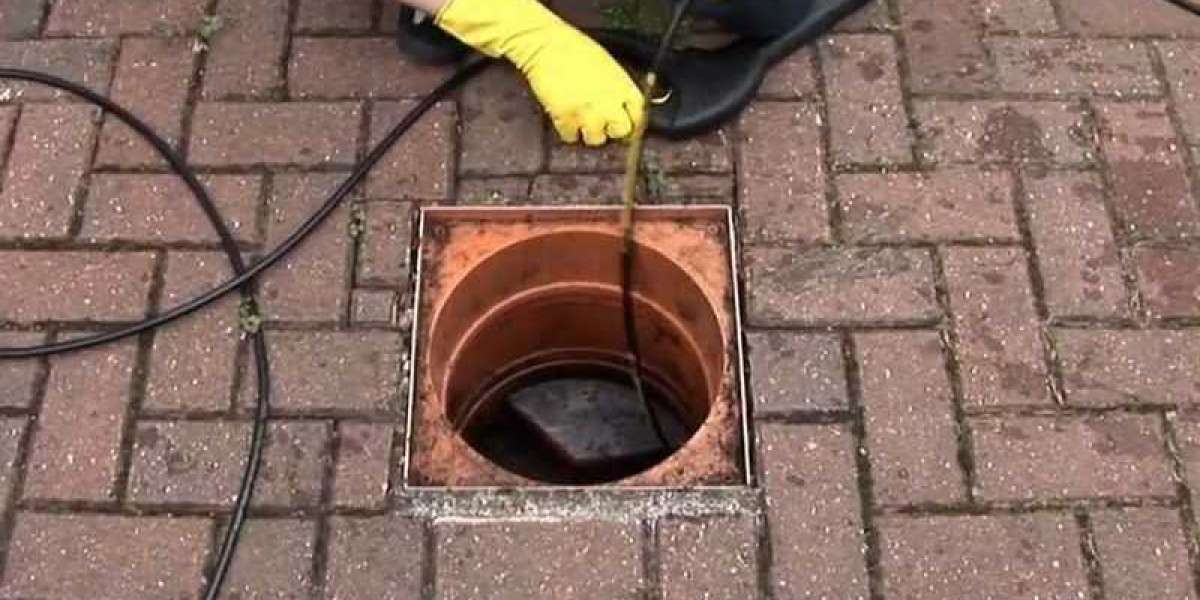Pitch fibre drains were once a common choice for drainage systems, particularly from the 1950s to the 1970s. However, these pipes have since been found to deteriorate over time, leading to numerous issues such as deformation, blistering, and root intrusion. As a homeowner or property manager in Oxfordshire, knowing how to repair and maintain pitch fibre drains is essential to keeping your plumbing system in good working order.
In this article, we’ll explore common problems associated with Pitch Fibre Drains Oxfordshire, along with practical repair and maintenance solutions. If you're currently facing issues with these drains, you can find professional help here.
Understanding Pitch Fibre Drains
Pitch fibre drains were an innovative solution in their time, made from a combination of cellulose fibres and coal tar. These materials made the pipes lightweight and cost-effective, but their durability has been a major concern over the years.
Why Were Pitch Fibre Drains Used?
Pitch fibre was widely adopted because it was cheaper and easier to install than traditional materials like clay or iron. However, as the pipes age, they are prone to degradation and often require repair or replacement to maintain their functionality.
1. Common Problems with Pitch Fibre Drains
While pitch fibre drains were effective when new, they tend to develop a number of issues over time. Below are the most common problems homeowners face with these older pipes.
Deformation and Collapsing
Pitch fibre pipes can lose their shape over time due to soil pressure and the movement of groundwater. This deformation reduces the flow of water and can cause blockages.
Blistering of the Pipe Walls
Blistering occurs when bubbles form inside the pipe due to the breakdown of the coal tar used in the pitch fibre. These blisters create obstructions in the pipe, causing reduced water flow and increasing the likelihood of blockages.
Delamination
Delamination is another common issue, where the layers of the pipe material begin to separate. This weakens the structure of the pipe and makes it prone to collapse.
Root Intrusion
Pitch fibre drains are particularly vulnerable to root intrusion. Tree roots are naturally drawn to the moisture inside drainage pipes, and they can easily penetrate through small cracks in pitch fibre pipes, causing blockages and structural damage.
2. Identifying the Signs of Damage
To prevent major damage and costly repairs, it's important to recognise the signs that your pitch fibre drains are starting to fail. Here are some key indicators that you should watch out for.
Slow Drainage
If you notice that water is draining more slowly than usual from your sinks, toilets, or showers, it could be a sign of a blockage or deformation in the pitch fibre drains.
Foul Smells
Foul odours coming from your drains are often a result of waste build-up due to a blockage or a collapsed pipe. This is a clear sign that your pitch fibre drains may need attention.
Recurring Blockages
Frequent blockages in your plumbing system indicate that the pipes themselves may be compromised. If plunging or using a drain snake doesn’t solve the issue, the problem may lie with your pitch fibre drains.
Visible Cracks or Damage
If you can access part of your drainage system and notice visible cracks or blistering on the pipes, this is a sure sign that your pitch fibre drains are deteriorating and may require repairs or replacement.
3. Professional Solutions for Repairing Pitch Fibre Drains
Once you’ve identified issues with your pitch fibre drains, the next step is finding the right solution. Fortunately, there are several professional methods available to repair and restore these aging pipes.
CCTV Drain Surveys
Before any repair work can begin, a professional plumber will likely conduct a CCTV drain survey to assess the condition of your pipes. This involves sending a small camera down the pipes to check for blockages, cracks, and signs of collapse.
Why a CCTV Survey?
- Accurately identifies the source of the problem.
- Non-invasive and cost-effective.
- Provides a clear picture of what repairs are necessary.
Pipe Relining
Pipe relining is a common method used to repair damaged pitch fibre drains without the need for excavation. In this process, a resin-coated liner is inserted into the pipe, which hardens to form a new pipe within the old one.
Advantages of Pipe Relining
- No need to dig up your garden or driveway.
- Extends the life of your existing pipes.
- Quick and cost-effective.
Pipe Replacement
In cases where the pitch fibre drains have collapsed or suffered extensive damage, replacing the pipes may be the best option. This involves excavating the affected area and installing new, more durable materials like PVC or clay pipes.
When to Opt for Replacement
- The pipes are beyond repair due to severe deformation or collapse.
- The cost of continuous repairs outweighs the benefits.
- The system requires long-term reliability.
High-Pressure Water Jetting
If the primary issue is a blockage caused by grease, debris, or tree roots, high-pressure water jetting is an effective solution. This method uses powerful jets of water to clear blockages and restore normal water flow.
Benefits of Water Jetting
- Clears even the most stubborn blockages.
- Safe and non-invasive.
- Prevents future build-up by thoroughly cleaning the pipes.
Root Removal and Repairs
If tree roots have infiltrated your pitch fibre drains, they need to be removed promptly. Professional plumbers can use specialist root-cutting tools to clear the roots and repair the damage caused.
Why Root Removal is Important
- Prevents further damage to your pipes.
- Reduces the likelihood of recurring blockages.
- Helps restore the full functionality of your drainage system.
4. Preventative Maintenance for Pitch Fibre Drains
Once your pitch fibre drains have been repaired, it’s important to take steps to maintain them and avoid future issues. Here are some preventative measures you can take to extend the life of your drainage system.
Regular Drain Inspections
Regular inspections of your drainage system can help identify small issues before they turn into major problems. Scheduling annual CCTV drain surveys will ensure that your pipes are functioning properly.
Why Inspections Matter
- Helps catch problems early.
- Reduces the risk of costly repairs in the future.
- Keeps your system running efficiently.
Avoid Planting Trees Near Drains
Since root intrusion is a common problem with pitch fibre drains, avoid planting trees or large shrubs near your drainage system. If trees are already present, consider removing them or installing root barriers to protect your pipes.
Proper Waste Disposal
Avoid flushing non-biodegradable items such as wet wipes, sanitary products, or cooking fats down the drains. These can contribute to blockages and exacerbate existing problems in your pitch fibre drains.
5. The Importance of Professional Drainage Services
When dealing with pitch fibre drains, it’s essential to seek professional help. Attempting to repair or maintain these pipes on your own can lead to further damage, especially if you’re dealing with root intrusion or severe blockages.
Why Choose a Professional?
- Experienced professionals have the right tools and expertise.
- They can diagnose the issue accurately with CCTV surveys.
- Professional repairs are more likely to last and ensure long-term efficiency.
Conclusion: Maintain and Repair Your Pitch Fibre Drains with Expert Help
Pitch fibre drains, while once a cost-effective solution, often face significant issues as they age. Regular maintenance, timely repairs, and professional solutions like pipe relining or high-pressure water jetting can keep your drainage system in top condition.
If you suspect that your Pitch Fibre Drains Oxfordshire are in need of repair, don’t wait until the problem worsens. You can explore expert services and get professional assistance here to restore your drainage system and avoid costly issues down the line.
Act now to protect your drainage system and ensure your home remains free from blockages and damage.








